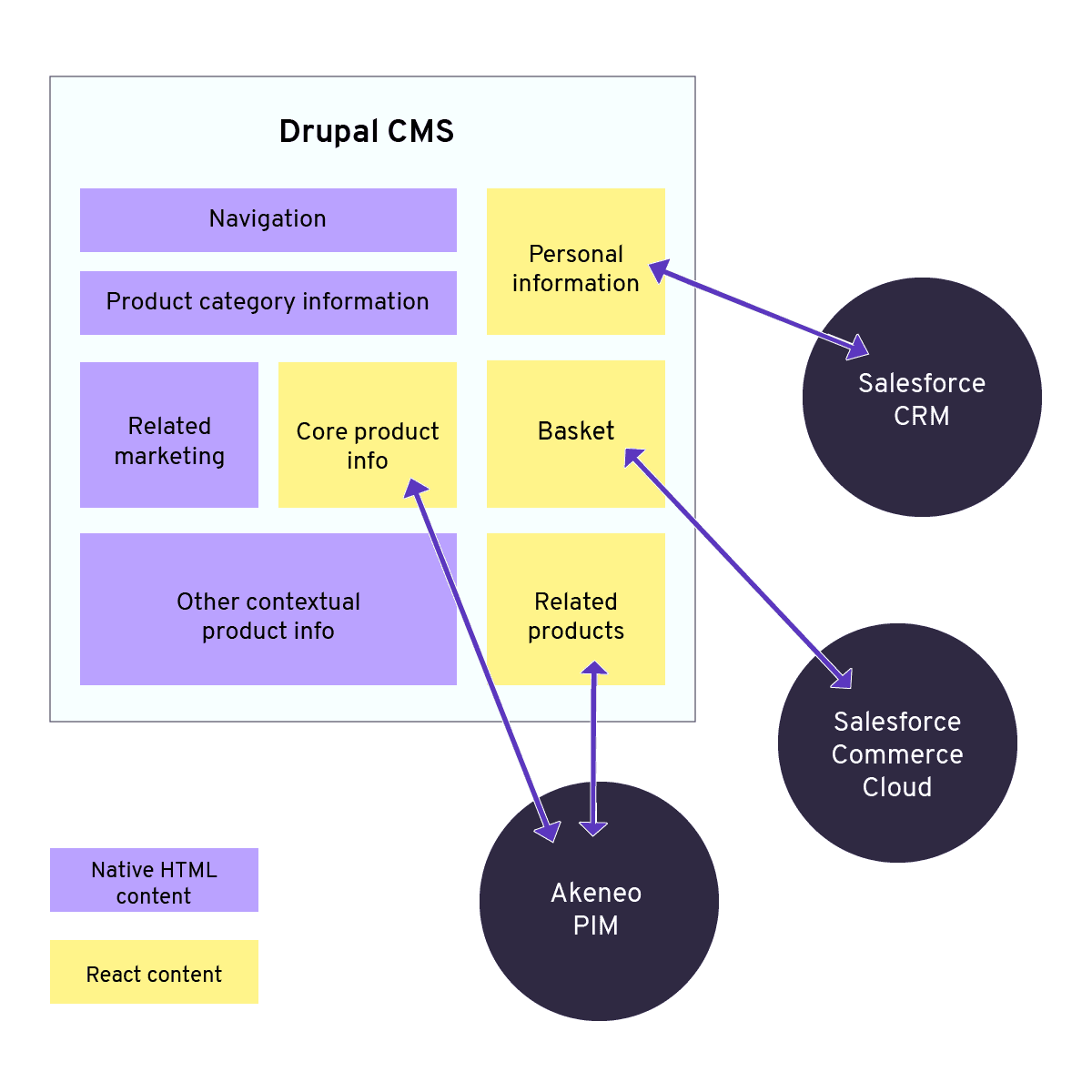An Efficient and cost-effective approach to eCommerce - Composable

The challenge of combining content management and eCommerce is real for many companies with content-heavy product portfolios. While a decoupled solution can solve this problem, it can be costly and result in a loss of best-of-breed content management tools. As a novel alternative, we propose using a hybrid CMS, in our case powered by Drupal, in conjunction with a headless eCommerce platform. In this article, we share our ideas on this solution and the architecture it’s based on.
Composable commerce combined with hybrid CMS
Combining content management and eCommerce has traditionally been a major headache for companies that have a content-heavy product portfolio. Online stores, manufacturing, and pretty much anyone that sells directly to its customers has the same problem. How to run content-rich experiences combined with excellent eCommerce experience? How to collect, utilize and provide the relevant data to all necessary stakeholders. How to make the systems talk with each other without creating an architectural, unmaintainable Frankenstein?
Composable architecture with going all headless on both eCommerce and content management does partially solve this problem. However, it does that with great cost and loss of best-of-breed content management tools. We propose a different approach to the problem, using a hybrid CMS together with a headless eCommerce platform.
Using Drupal CMS as the glue between composable systems
The benefit of having a modern hybrid CMS like Drupal is that it can do both API first and native HTML content. This means we can implement a mixed site with a seamless user experience, allow marketers to have full control over it, and do it with a fraction of the long-term cost of going fully headless.
Our suggested architectural approach is to include, for example, core product content and eCommerce workflows as react components inside of an HTML page generated by Drupal. The end user will not see any difference between these components and the native HTML page, but using them keeps the technical architecture simple and the amount of effort required in building the site relatively low.

The idea of composable in one picture: Drupal CMS is the platform for all components, and it welcomes and utilizes components that leverage information from decoupled services (for example, Basket, which is a React content generated directly based on Salesforce Commerce Cloud content). So not just a single, rigid monolith, nor a microservice with dozens of individual services and highly complex overall architecture but a solution combining the best of both worlds and avoiding many of the major problems in both monoliths and microservices.
Not only does this approach save a lot of effort in the longer run, but it also retains the full power of Drupal as a CMS. This means marketing can A/B test different versions of eCommerce workflows easily, analytics and SEO are smooth & effective, and content editors have all normal tools at their disposal.
The natural downside of this approach is losing some application-style interactions on one page. In order to keep the architecture clean, a page has to be reloaded for most user actions. This means this approach is not suitable for all use cases, but given the benefits, it still works well for the majority of content-heavy eCommerce cases.
Sounds interesting?
Send Vesa a message or fill in the form and let us contact you – let's discuss how your organization could benefit from Composable!
